Dynamic Arrays Part I – The Biggest Change to Excel in Years
At The Marquee Group, we pride ourselves on being “old school” users of Microsoft Excel, starting on versions of the popular software dating back to the early 1990’s (though those particular users might not admit it). Changes to Excel’s software tend to be slow, incremental and nearly always backward compatible (one of the requirements of maintaining software in use by hundreds of millions of people worldwide). However, the latest versions of Excel (in the “Current Channel” of Microsoft 365 since January 2020) have introduced a new feature that changes the fundamental way spreadsheets can be used in the future.
In the past, you would enter a single formula into a cell and it would return a single result. If you wanted additional results, you would need to copy the formula down. For example:
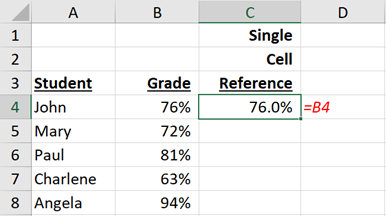
Dynamic Arrays add an entirely new way to use spreadsheets. It is now possible to enter a single formula that will return a range of results across a number of cells (as seen below).
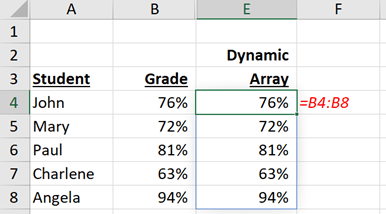
Avid users of Excel will notice that this is similar to previous Array behaviour in Excel (i.e. formulas you would enter in a range of cells by entering CTRL + SHIFT + ENTER). Dynamic Arrays dramatically simplify and expand the use of this behaviour and avoid many of the shortcomings of the classic Array feature in Excel.
Key to understanding this new feature is to realize that you are only entering the formula in one cell (in the example above, in cell E4). The results of the formula “spill” out of the cell to create the Dynamic Array. The cells below E4 (for example, cell E5), contain information, but do not have an actual formula. If you select the cell, you will see greyed out text in the formula bar showing that the cell contains results “spilled” from a formula in a different location.
![]()
At first, these formulas look like an alternative to copying across a range. But Microsoft has also introduced a number of new functions that take advantage of this behaviour (and there are a few older functions that can leverage this functionality as well). A key to using these new features is to understand that the size of the resulting Dynamic Array can change automatically depending on the values that you provide to the formula.
New Excel Functions Using Dynamic Arrays
- UNIQUE: Returns a Dynamic Array with a list of unique values in a list or range (a common task that was much more difficult with “standard” Excel functions).
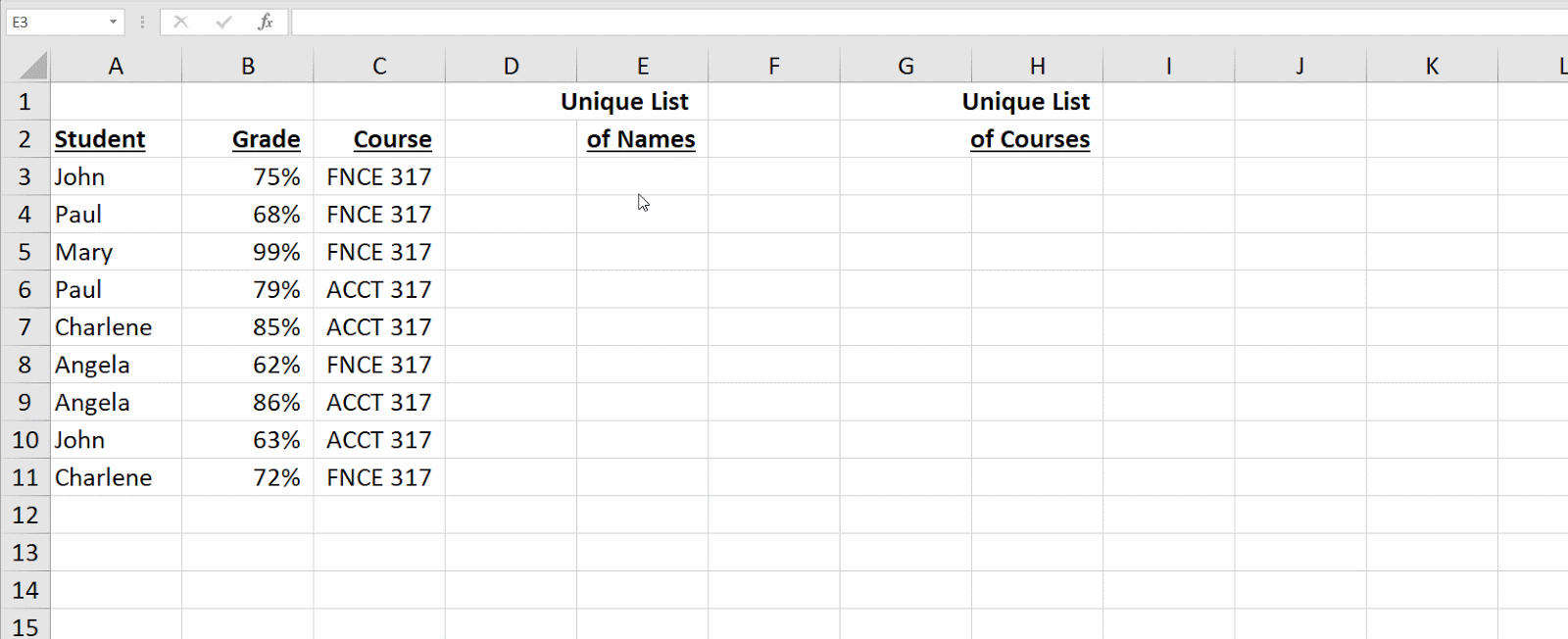
- FILTER: Create a Dynamic Array filtered based on criteria that can be changed.
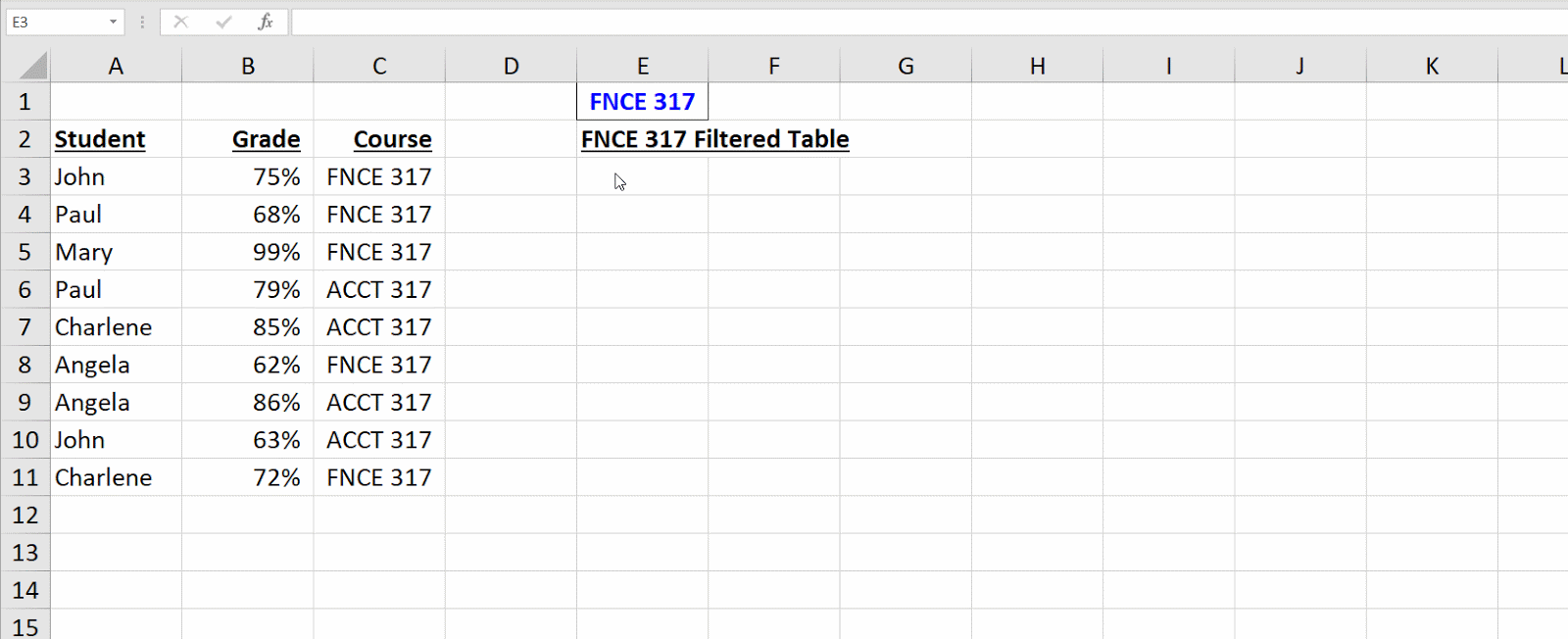
- SORT: Sort the contents of a range with the ability to specify which column to sort by in either ascending or descending order.
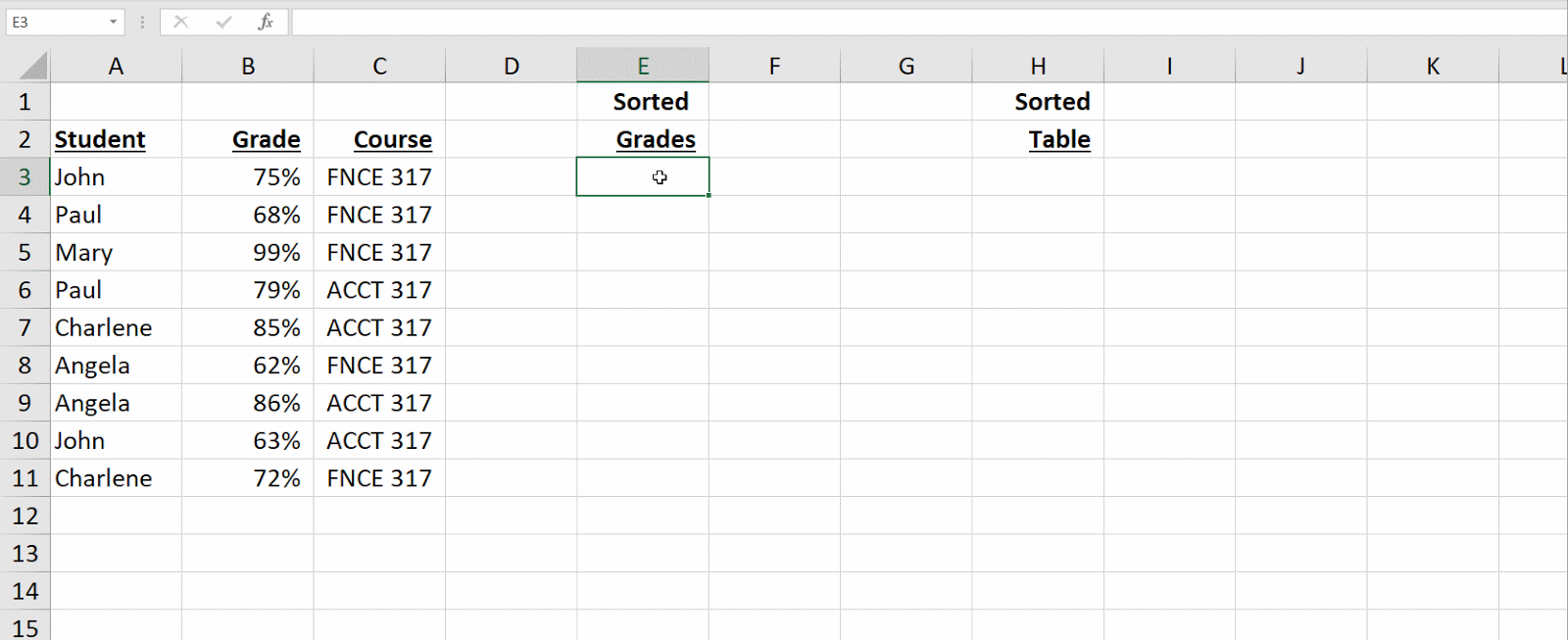
- SORTBY: Sort the contents of a range with the ability to sort based on multiple columns in either ascending or descending order.
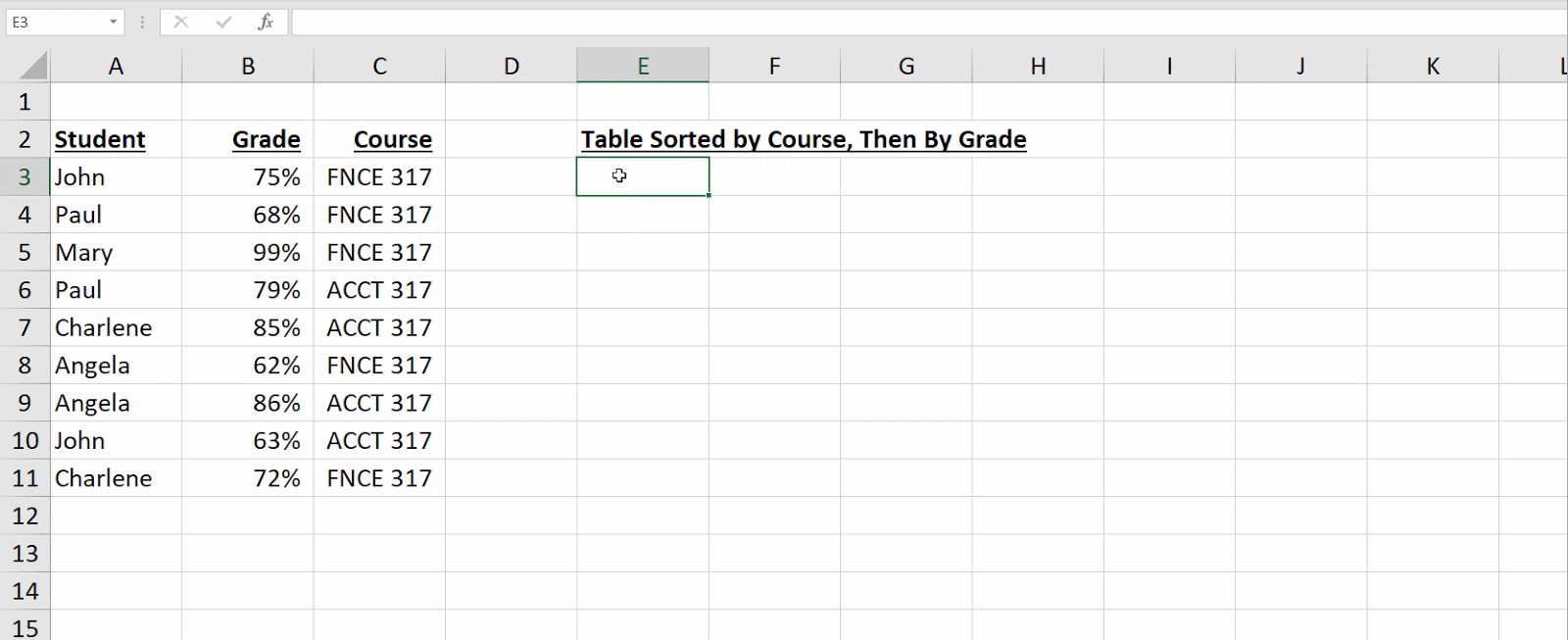
- SEQUENCE: Create a Dynamic Array with a sequential list of numbers with the ability to set starting value and the “step” for each sequence.
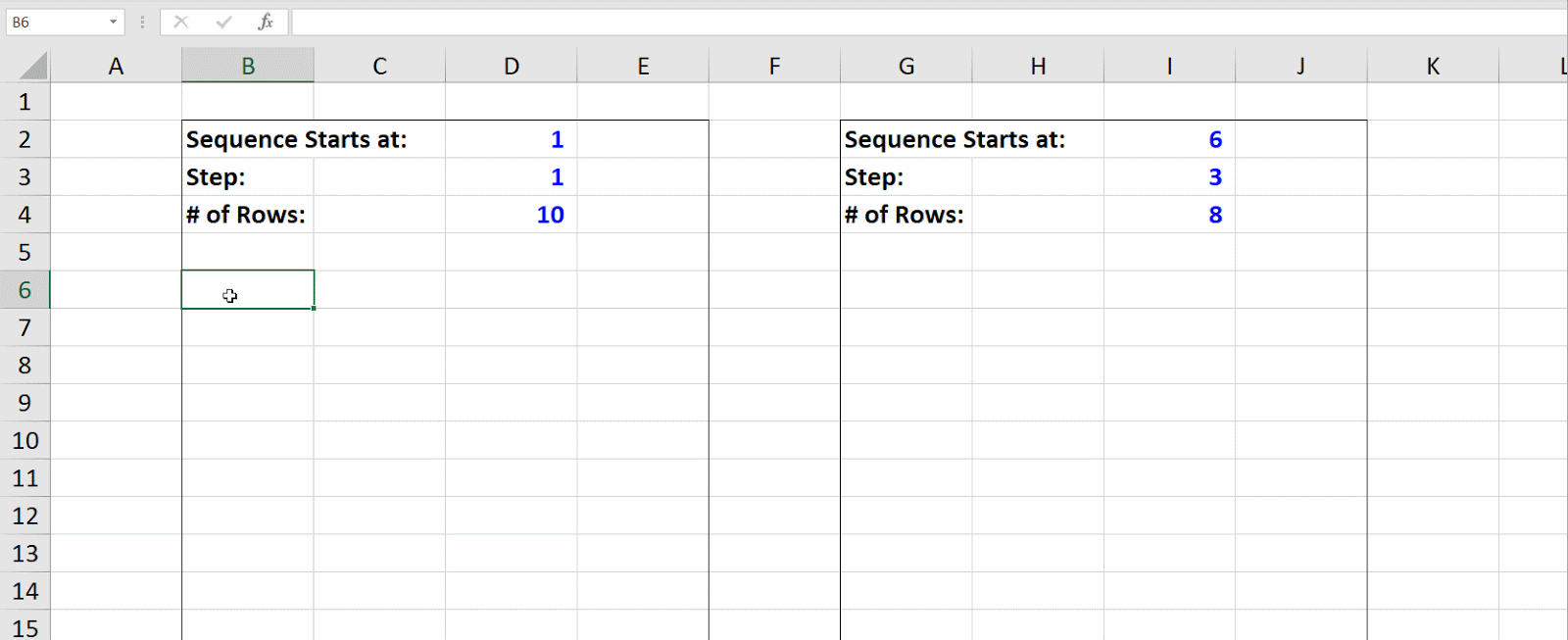
- RANDARRAY: Create a Dynamic Array with a list of random numbers (either integers or decimal numbers)
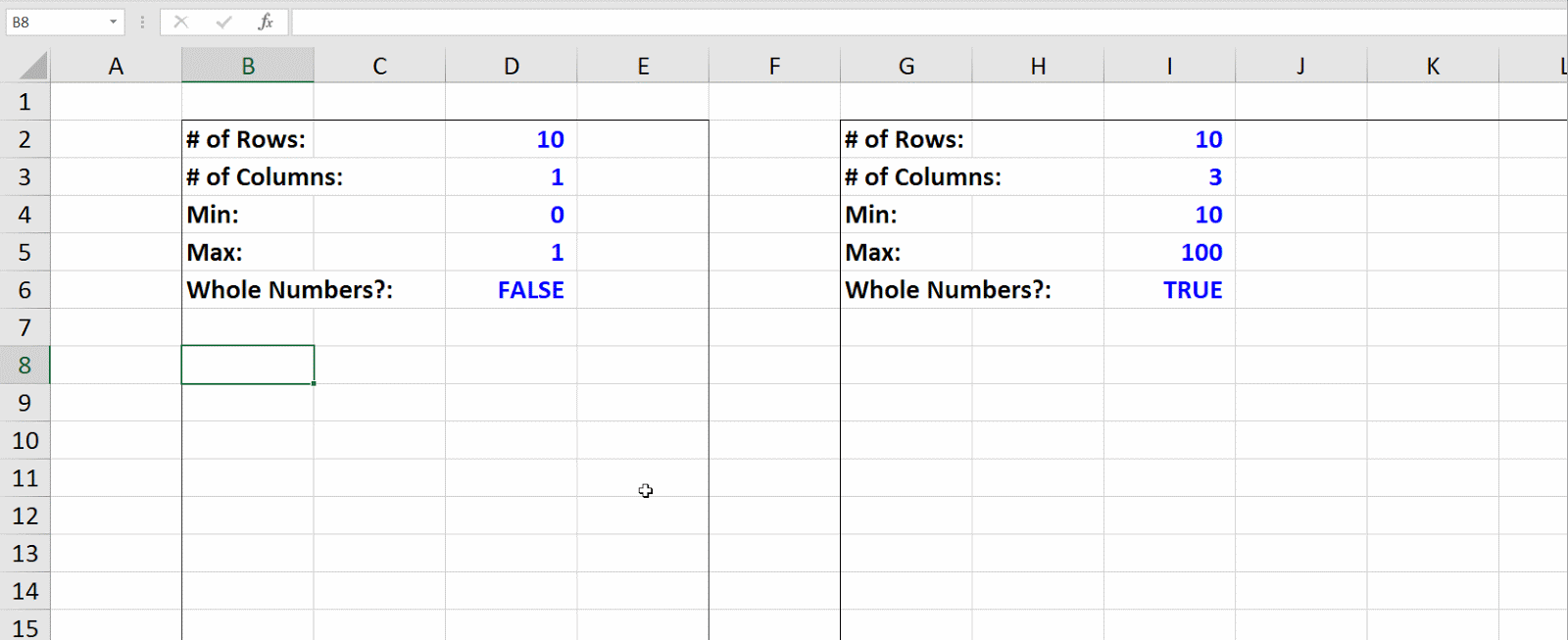
Dynamic Arrays with the OFFSET Function
One of the most valuable uses of Dynamic Arrays is to create lists that update automatically in conjunction with the OFFSET function in Excel. Excel’s offset function will start from a reference cell, move a certain number of rows or columns in any direction, and return the value in that cell.
OFFSET also has two additional arguments that allow you to return an array of values of a certain width or height. Prior to Dynamic Arrays, these OFFSET functions would be used with Dynamic Named Ranges (a topic for another day and covered in Marquee’s Excel 2: Advanced Data Analysis course) or with Excel’s previous Array behaviour (CTRL + SHIFT + ENTER). With Dynamic Arrays, much of OFFSET’s power has been unlocked with the ability to display extremely customized lists from large datasets. In the example below, we use an OFFSET formula that will allow us to display the first X values in the list (7 in our example). This can be changed on the fly and the list will automatically update.

BUT WAIT! I’m fine with the new functions, but I want my OFFSET function in Excel to work like it did back in 2003! Never fear, see the endnote at the bottom of this article to learn how to do that.
Potential Dynamic Array Pitfalls
Dynamic Arrays are very helpful and create new and powerful ways to use Microsoft Excel. With any new tool, it is important to understand any limitations before putting this functionality “into the wild” in your spreadsheets.
- SPILL errors: The change to behaviour where a single formula may return results across a range of cells introduces some new issues. You may find that Excel is unable to return the range of information that you have requested. This will generate a #SPILL! error. Reasons that you may get a spill error include:
– The spill range has other information in it already
– Excel can’t determine the size of the array being spilled because it is volatile (i.e. using a random number to define the size of the Dynamic Array
– The result extends beyond the boundaries of the workbook
– The formula is in a Table (Dynamic Arrays formulas will not work inside a Table, but Dyanmic Array formulas can refer to a Table)
– The result is too large and Excel has run out of memory
– The result is spilling into a merged cell (another reason to avoid the use of merged cells in spreadsheets) - Backward compatibility: Dynamic Arrays are only available on Microsoft 365 versions of Excel (Current Channel) and are not available on Excel 2019/2016 (or earlier versions). If you save a worksheet with Dynamic Arrays and somebody tries to use the sheet on an older version of Excel, the Dynamic Arrays will be converted to traditional Arrays. This can cause a loss of functionality or unexpected behaviour.
- Creating unnecessary complication: The Marquee Group always believes that you should use the simplest, most understandable features in Excel to accomplish what you want to accomplish. While Dynamic Arrays add interesting new ways to analyse data, thought should be given to whether Dynamic Arrays are the simplest approach possible.
Dynamic Arrays are an exciting new feature in Excel; we are looking forward to seeing new and creative implementations of these functions in the world of financial modeling & analysis as they become available to more Excel users!
The Marquee Group is working on shorter webinar sessions that will walk participants through interesting use cases for Excel’s new Dynamic Array functionality. Watch for future Benchmarq editions or keep an eye on our course calendar if you’d like to learn more! If you have questions about Dynamic Arrays, or how to implement them in your spreadsheets, please reach out to us at info@marqueegroup.ca.
——
ENDNOTE: New things frighten me.
Sometimes we just want things to work like they did back in Excel 2003. When the paste special shortcut was Alt -> E -> S -> F, when 50 Cent topped the charts and when popped collars were finally making their comeback.
We can force Excel to stop spilling and return a single value from the resulting array by using the @ symbol after the equals sign (i.e. =@OFFSET(B3,0,0,H2)). This is called the intersection operator and will return a single result from the array that is on the same row (or column) that the formula is entered in.
The intersection operator (and it’s cousin, the spilled range operator (#)) allow for some interesting other behaviour with Dynamic Arrays, but this article is long enough as is; we will return to this topic before long.
